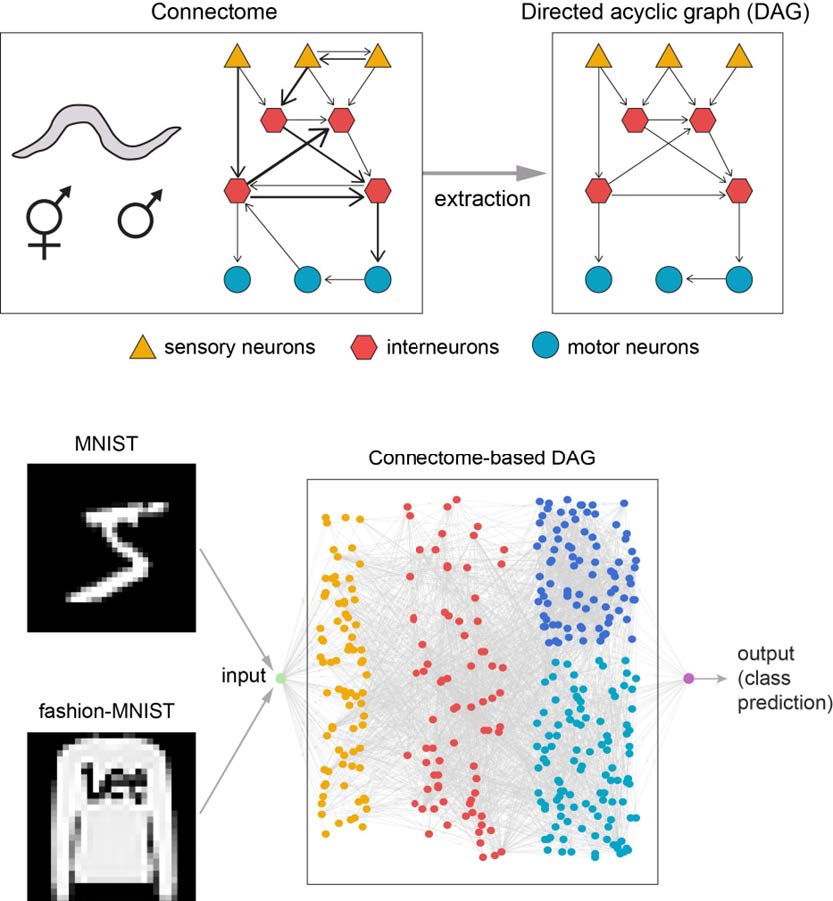Articles
Article Tools
Stats or Metrics
Article
Short Communication
Exp Neurobiol 2023; 32(2): 102-109
Published online April 30, 2023
https://doi.org/10.5607/en23004
© The Korean Society for Brain and Neural Sciences
Caenorhabditis elegans Connectomes of both Sexes as Image Classifiers
Changjoo Park* and Jinseop S. Kim*
Department of Biological Sciences, Sungkyunkwan University, Suwon 16419, Korea
Correspondence to: *To whom correspondence should be addressed.
Changjoo Park, TEL: 82-31-290-7084, FAX: 82-31-290-7015
e-mail: cjpark147@skku.edu
Jinseop S. Kim, TEL: 82-31-290-7014, FAX: 82-31-290-7015
e-mail: jinseopskim@skku.edu
This is an Open Access article distributed under the terms of the Creative Commons Attribution Non-Commercial License (http://creativecommons.org/licenses/by-nc/4.0) which permits unrestricted non-commercial use, distribution, and reproduction in any medium, provided the original work is properly cited.
Abstract
Connectome, the complete wiring diagram of the nervous system of an organism, is the biological substrate of the mind. While biological neural networks are crucial to the understanding of neural computation mechanisms, recent artificial neural networks (ANNs) have been developed independently from the study of real neural networks. Computational scientists are searching for various ANN architectures to improve machine learning since the architectures are associated with the accuracy of ANNs. A recent study used the hermaphrodite
Graphical Abstract

Keywords: Connectome, Artificial neural network,


